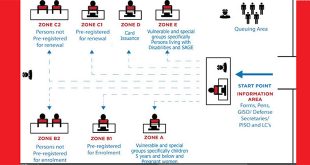
Kampala, Uganda | THE INDEPENDENT | Top earners around the world have seen their share of national income rise in the last decade and a half, while everyone else has seen their pay packets shrink, by comparison, a report by economists from the International Labour Organization shows.
The ILO assessment gives the first global estimates of the distribution of labour income and shows that pay inequality remains pervasive in the world of work. The findings are drawn from a new database which includes national, regional and global data.
According to the data gathered from 189 countries, roughly 300 million workers earn around USD 7,500 (27 million Shillings) per month, collectively taking nearly half of the global pay. In contrast, almost half of the world’s workers – around 1.6 billion people – make just USD 200 (730,000 Shillings) a month and the bottom 10 per cent’s monthly earnings amount to just USD 22 (80,000 Shillings).
The report indicates that low earners will have to work for 28 years to earn the same as the top 10 per cent does in a single month.
Another key finding of the ILO data covering salaried and self-employed workers for the period 2004 to 2017, is that income is shared more unequally in poorer countries than in richer ones. This is highlighted by the fact that the pay of top earners in developed countries accounts for only 30 percent of their national economies – or gross domestic product – compared to 70 per cent in emerging nations.
The countries with the most unequal distributions, according to the report are DR Congo, Côte d’Ivoire, Liberia, Niger and Uganda.
“The data show that in relative terms, increases in the top labour incomes are associated with losses for everyone else, with both the middle class and lower-income workers seeing their share of income decline,” said Steven Kapsos, Head of the ILO’s Data Production and Analysis Unit.
“However, when the labour income shares of the middle or lower income workers increase, the gains tend to be widespread, favouring everyone except the top earners,” He adds.
According to ILO, countries, where top earners saw their share of national pay rise by at least one percentage point in the period under review, included Germany, Indonesia, Italy, Pakistan, the United Kingdom and the United States.
In Sub-Saharan Africa, the bottom 50 percent of workers earn only 3.3 per cent of labour income, compared to the European Union, where the same group receives 22.9 per cent of the total income paid to workers.
While data indicates that worldwide labour income inequality has fallen since the start of the period, ILO economist Roger Gomis explained that this is because of growing prosperity in large emerging economies, namely China and India, rather than reductions in income gaps within countries.
“The majority of the global workforce endures strikingly low pay and for many having a job does not mean having enough to live on,” Gomis said.
The release of the new dataset follows a recommendation in the report of the ILO Global Commission on the Future of Work, which highlighted the need for new indicators to more accurately track progress on well-being, environmental sustainability, equality and a human-centred development agenda. The new dataset will also be used to monitor progress towards the United Nations’ Sustainable Development Goals (SDGs).
*****
URN
 The Independent Uganda: You get the Truth we Pay the Price
The Independent Uganda: You get the Truth we Pay the Price



